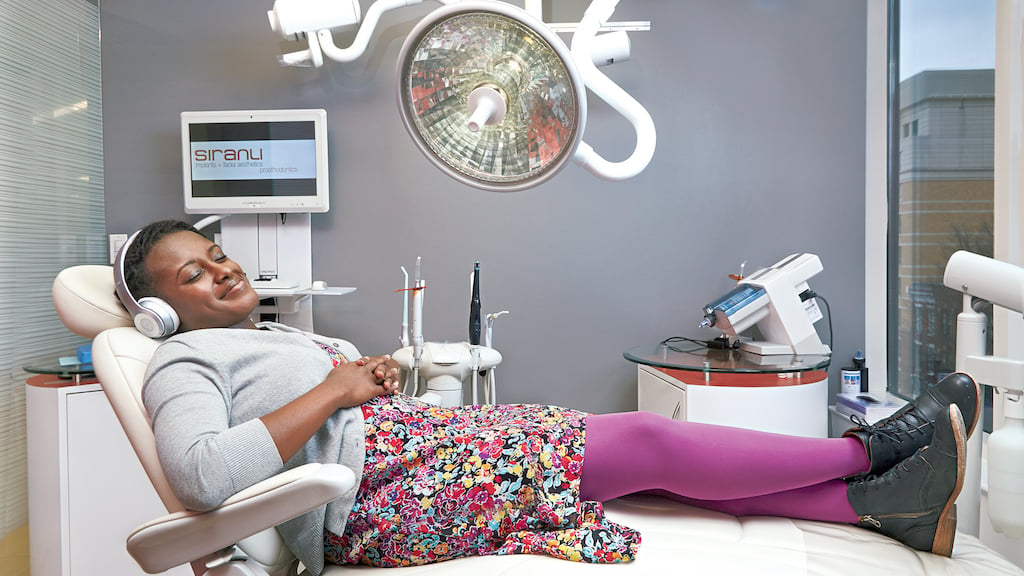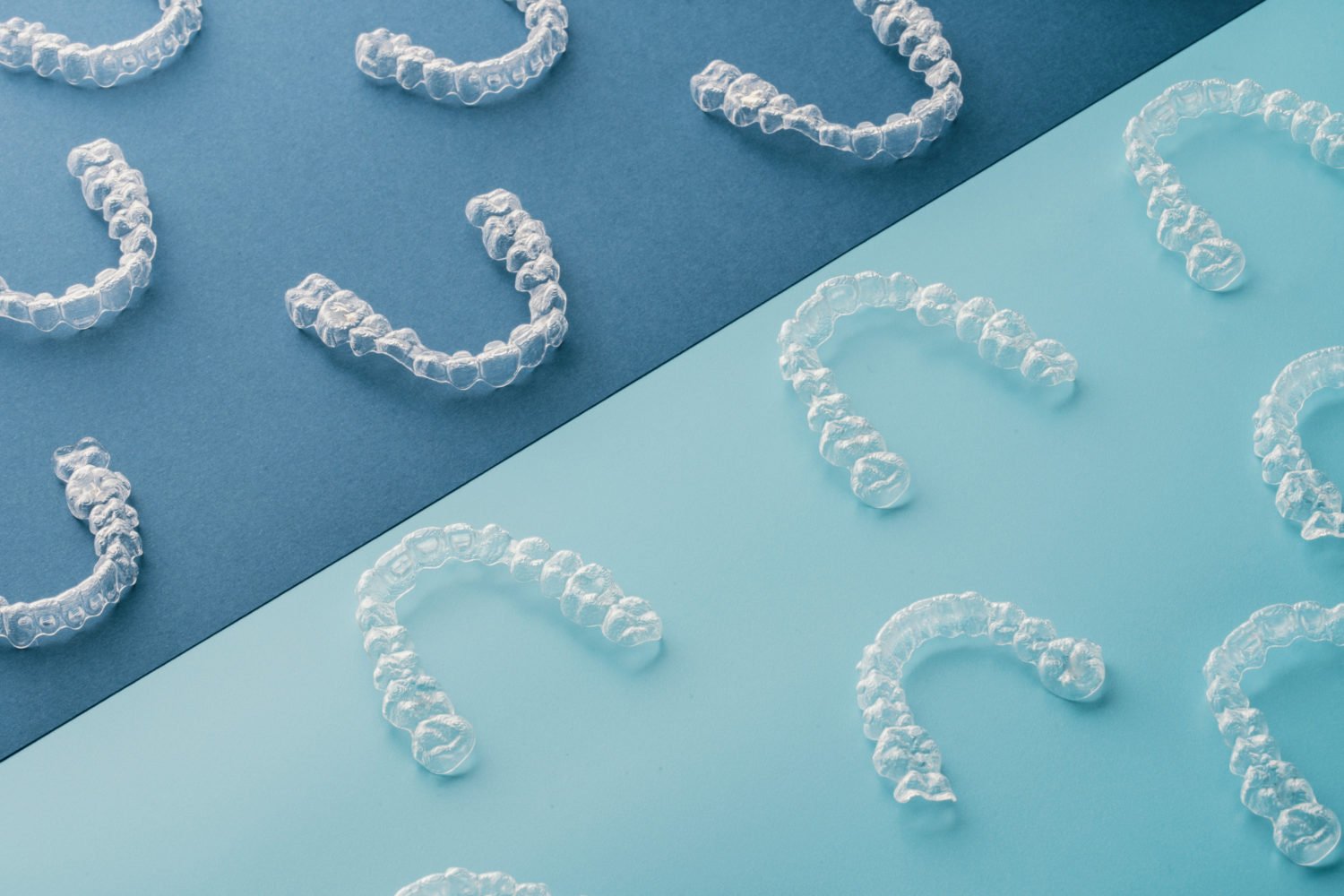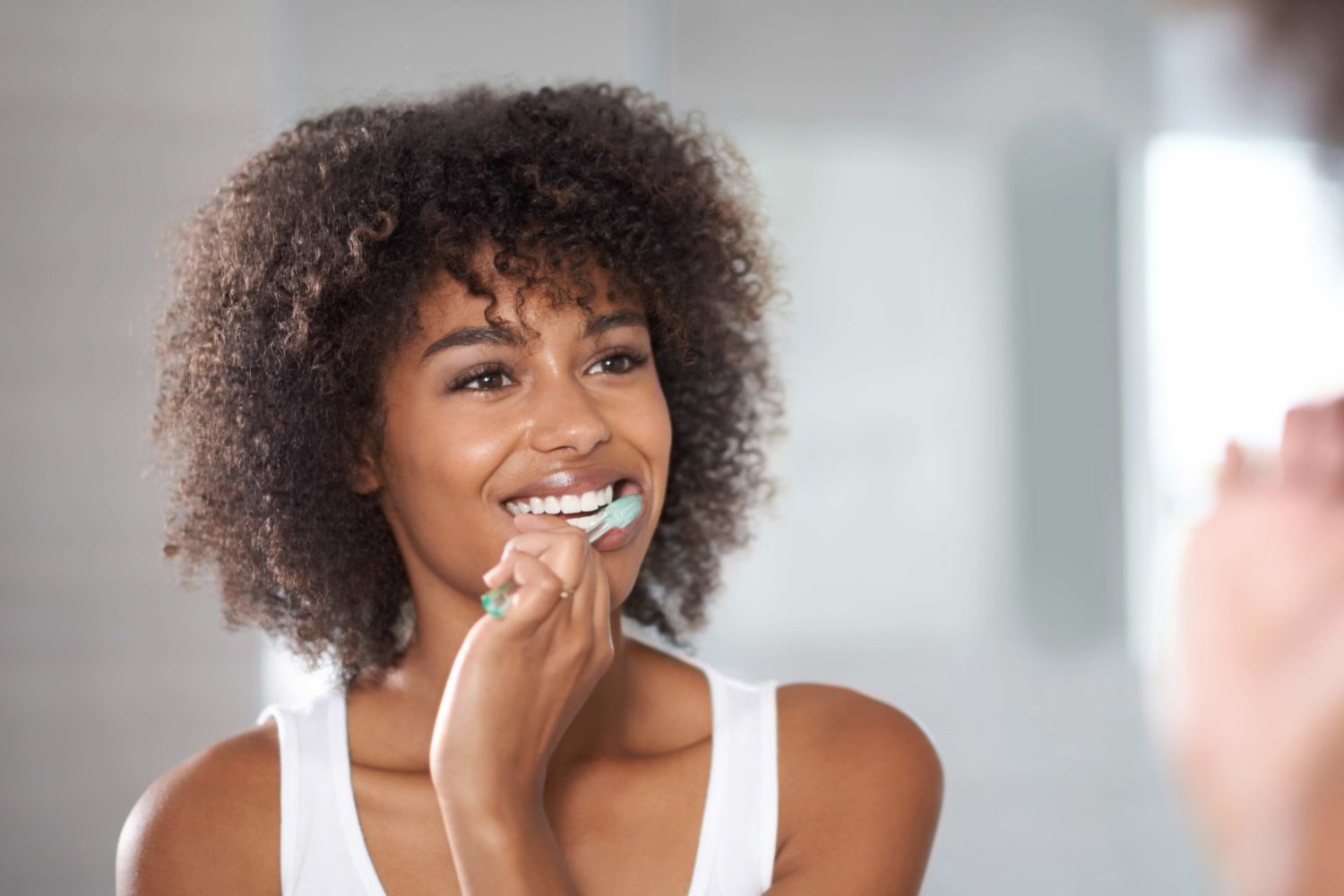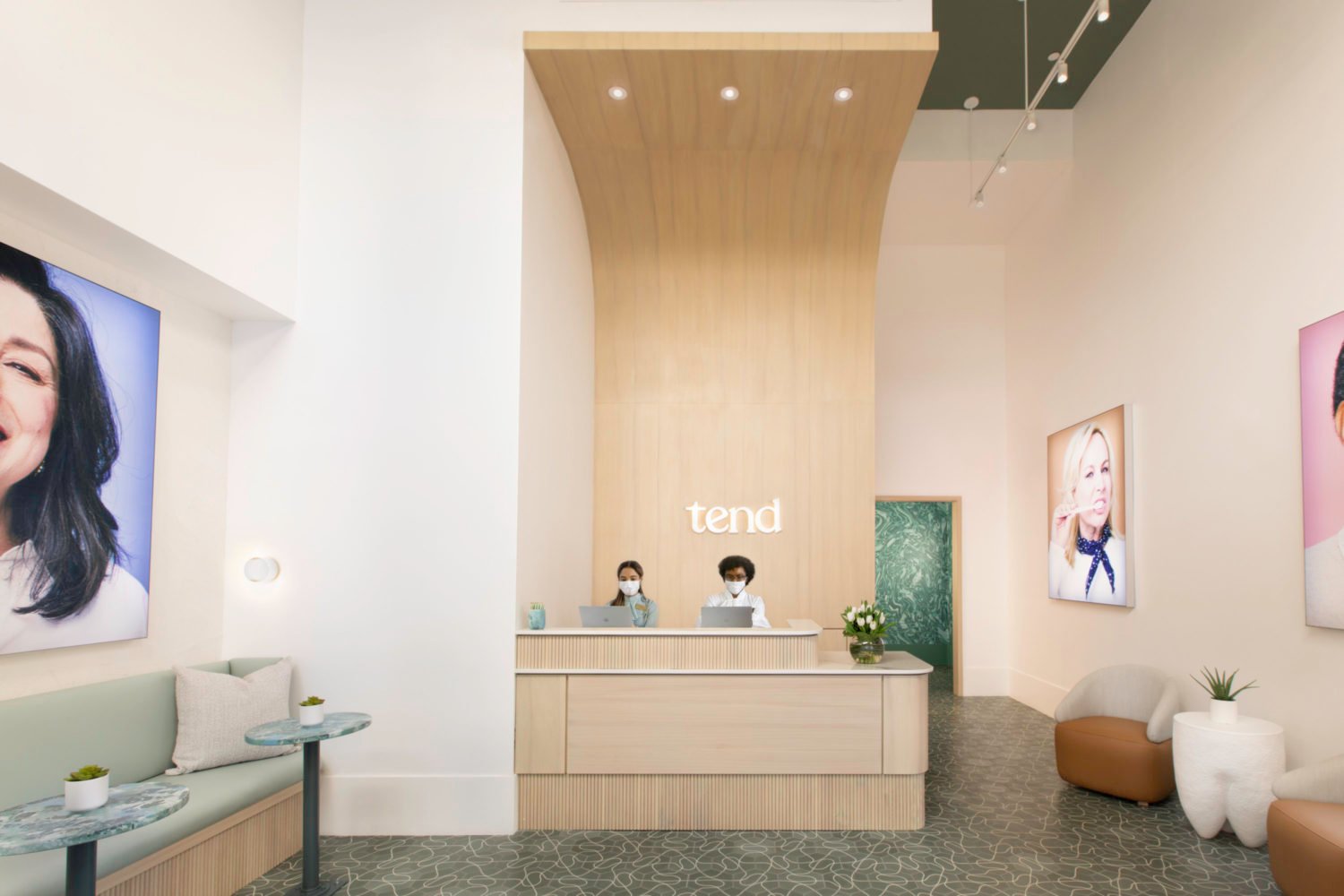Dental visits have never been something people look forward to. From the original barber-surgeons—handy for a shave, a haircut, and a tooth extraction—to the first foot-powered dental drill, which was a repurposed spinning wheel, getting our teeth fixed has been a source of trauma.
Even well after the invention of Novocain, it still can be. According to Dr. Lisa Heaton, an assistant professor at the University of Washington’s Dental Fears Clinic—yes, there is such a thing—about 80 percent of adults in the United States have some anxiety about going to the dentist. At least 5 percent of that group are so afraid that they avoid appointments altogether. Those numbers have remained steady over the past 50 years, though dentistry has changed.
Heaton has witnessed this fear first-hand. After staying away from dentists for 20 years, one patient couldn’t set foot into her exam room the first few times she tried. When she finally made it into the chair, she started to cry.
But it turns out dental phobia has at least one upside: It has spurred the industry to find new ways to reduce pain. Those giant, scary needles once used to inject anesthesia? Enter the Wand, a computer-controlled machine that uses a smaller needle and delivers anesthesia at a controlled rate to make it less painful. There’s also the recently FDA-approved Kovanaze, a nasal spray that removes needles from the equation entirely.
The experience has also improved for people who’ve already had their dose of painkiller. Loud, hair-raising drills are a thing of the past, too—replaced in many dental offices with drills that are quieter and easier to maneuver. Ditto that goop that makes you gag while the dentist takes an impression of your teeth: It’s been replaced by digital imaging.
***
Some practices are also paying attention to what happens before you even get into the chair. Dr. Larry Bowers works out of a rowhouse on Capitol Hill and has arranged the entrance to feel more family room than waiting room. When dentist Johanna Huijssoon’s colleague Dr. Samantha Siranli refurbished their Foggy Bottom dental office a year and a half ago, the redesign included massage chairs and televisions paired with noise-canceling headphones.
“With all the great technology and great anesthetic, there is no need to be terrified of the dentist anymore,” says Huijssoon.
Leyla Ecevit, who is in her sixties and is one of Huijssoon and Siranli’s patients, has experienced dental anxiety since she was in high school and had two root canals. Though she still takes antianxiety medication before appointments, Ecevit has noticed the improved speed and quality of dental care.
“It used to be more painful, and there was nothing much the dentists could do,” she says. “I think they are doing their best to make the experience not only sort of painless but almost fun to be there.”
***
Fear of dentists isn’t just about physical pain or discomfort. If it were, things such as better anesthesia and a more comfortable chair would have erased those fears by now.
“For a number of people, there’s a social-anxiety component to it as well,” Heaton says. “They’re very concerned that the dentist is going to look in their mouths and say, ‘Oh, my goodness—you don’t brush your teeth.’ They’re afraid of being judged.”
This fear can send some into what Heaton calls “cycles of avoidance.” After one negative experience, some patients avoid the dentist until they have noticeable tooth problems. “They go to the dentist just when something is wrong, and when something is wrong, they usually have to have more invasive treatments, which reinforces this idea that going to the dentist is terrible,” she says.
Other patients are traumatized by a childhood memory or a story told by a parent—experiences that don’t reflect dentistry’s advances.
“It’s oftentimes parents who will plant the seed of anxiety in a kid because the parents had or heard of a bad experience and then share that with the kid,” says Dr. Brian Gray, who practices in Friendship Heights.
Huijssoon has heard parents promise their children ice cream and other rewards for making it through an appointment, strategies she believes can turn a simple cleaning into a bigger affair than necessary.
***
For others, the phobia stems from a lack of control they feel in a dentist’s chair. “They’re lying flat on their back, their mouths are open, they can’t communicate very easily,” says Heaton, “and so for a lot of people, giving up that control to another person—even if that person’s not hurting them—can be very anxiety-provoking.”
Heaton has come up with ways to make her Dental Fears Clinic patients feel safe. She tells patients to raise their left hand if they want a treatment to stop. She suggests statements they can repeat in their heads to get through a procedure, such as “I’m going to feel really good about myself when I’m done with this appointment.” To distract themselves, Heaton recommends that patients bring headphones to block out noise.
She also encourages anxious patients to book a consultation just to chat with a dentist. Anxiety can be lessened if the patient trusts the dentist and understands the procedure he or she is about to undergo.
“The human factor makes a big difference,” says Ecevit. “If the dentist takes account of your fears and does something to alleviate them, you trust that person more.”
Ecevit is hypersensitive to a common anesthesia ingredient used in dentistry, epinephrine—it can make her pass out. She once asked a dentist for an alternative for an upcoming procedure. Rather than talking her through how she’d be accommodated, the dentist told her just to come in and they’d handle it then. Ecevit ended up leaving that dentist.
In contrast, Huijssoon recently stayed with a fearful patient after applying anesthesia, chatting with him rather than leaving the room. Ten minutes later, the patient was numb and relaxed.
Says Heaton: “I teach in the University of Washington School of Dentistry, and I tell students: ‘You can do the most perfect filling anyone has ever done in the history of dentistry, but if your patient didn’t feel you were being nice to them, they’re not going to care about the quality of the filling—they’re going to care about how you treated them.’ ”
This article appears in the March 2017 issue of Washingtonian.




















